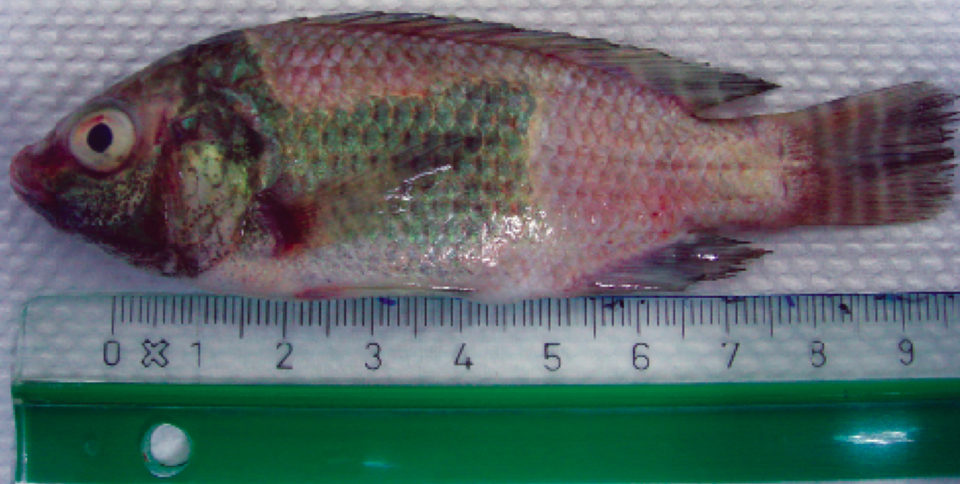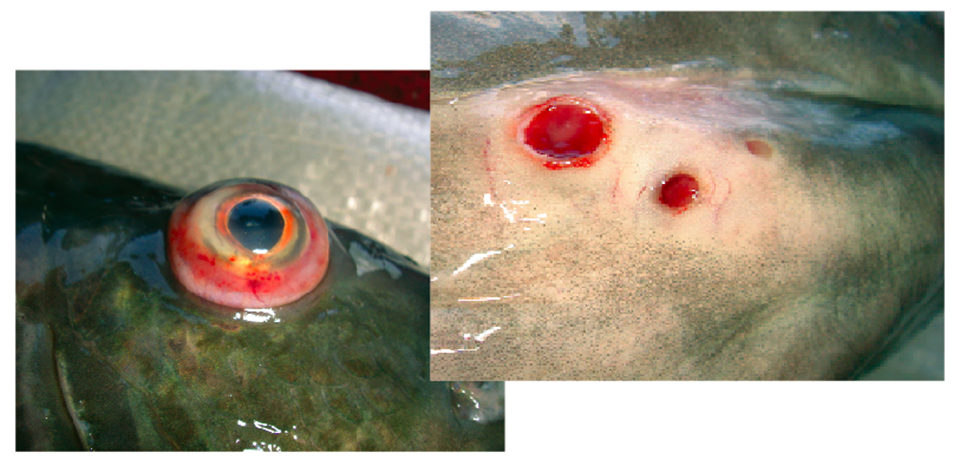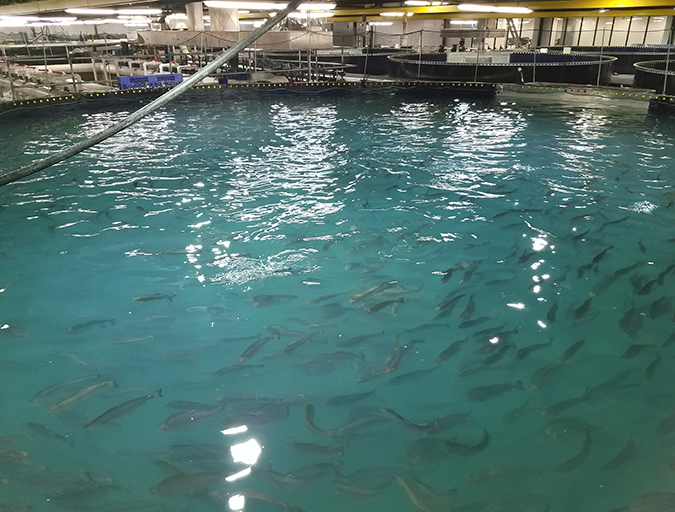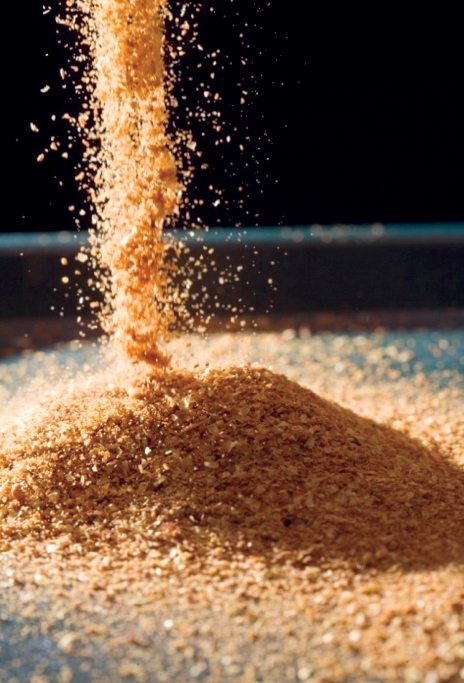Nature of parasite varies on farming systems, regions

Thoughtful attention should be given to keeping fish healthy throughout the aquaculture production cycle. In a new environment where no previous fish have been harvested, however, it can take several cycles for pathogen pressure to establish itself and trigger mortality. It is best to address as early as possible the risks related to diseases and possible strategies to keep survival and productivity high.
Disease factors
There is often confusion among tilapia industry stakeholders regarding the presence of bacteria, virus, or parasite pathogens and the incidence of disease at farms. Although the presence of a pathogen is a necessary factor for disease to develop, that alone is in most cases not sufficient to induce a disease outbreak.
In practice, diseases develop when a certain combination of suboptimal environmental factors meet and the stress level of the culture population reaches a point that is detrimental to the animals’ immune systems. For example, water temperature might increase or decrease depending on the season and induce fish stress.
Pathogens have different optimal temperature ranges at which they induce disease. For instance Francisella species outbreaks tend to develop after a drop in temperature under 28 degrees-C, whereas Streptococcus agalactiae outbreaks usually occur after temperature increases above 32 degrees-C.
Disease epidemiology, monitoring crucial
Prerequisites for disease prevention are the identification of the etiological agents responsible for diseases and understanding of the epidemiological factors that trigger and aggravate the diseases at farms. It is also critical to understand the delicate balance between farming intensity and the well-being of fish.
To fully identify pathogens, disease sampling and epidemiology should be carried out for several farming cycles over a one- or two-year period. Further routine monitoring can track health indicators in the fish population. For example, fish from ponds or cages where mortality has reached an alert level should be sampled for disease. The mortality alert level is expressed as percentage daily mortality.
Depending on the level of acceptable mortality at the end of the production cycle, each farm should decide on the level of percentage daily mortality that will trigger a full disease investigation in a given unit. This monitoring and alert system should allow the farm to identify early disease outbreaks and take action as soon as feasible. Alternative farming or husbandry strategies could be established to reduce the impacts of disease.

Major diseases
Experience has shown that most intensive fish-farming systems suffer from six to eight major infectious diseases, which must be prevented before the industry can truly become sustainable. After more than five years of sampling and disease epidemiological surveys across the Asia-Pacific region, Africa and Latin America, Intervet Norbio Singapore has identified four major bacterial disease pathogens – Streptococcus agalactiae, S. iniae, Flavobacterium columnare and a rickettsia-like organism recently identified as Francisella species – as well as the iridovirus viral agent and several major external parasites, including Trichodina and Amyloodinium.
As mentioned earlier, their prevalence and severity depend on environmental factors such as geographical location, culture system, farming intensity, salinity and water temperature; and biological factors such as age, genetics, nutrition and stress. An overview of economically important tilapia diseases is illustrated in Fig. 1.

Parasite management
Parasitic organisms are part of the normal fish environment, so avoidance is impossible. The nature of parasites can vary depending on farming systems and country. Therefore it is important to adopt farming practices that counteract the biology of the parasites and reduce the parasite pressure.
For instance, it is common practice for tilapia hatcheries to keep water salinity at 5 to 10 ppt to control populations of protozoan ciliates such as Trichodina. In extensive earthen pond systems, the biological control of snails and birds is the most effective strategy to break the cycle of digenean trematodes and avoid their presence in ponds. The application of legally authorized chemicals such as salt, formalin, hydrogen peroxide and potassium permanganate can also be helpful, but dose and duration of treatment must be adapted to several important parameters.
Juveniles are more sensitive than adults to chemical treatment and can’t tolerate a similar concentration of chemical. It may be necessary to add aeration or oxygenation to compensate for reduced dissolved-oxygen concentrations with some treatments. System type also affects treatments. A highly concentrated treatment can be implemented by using a tarpaulin system on a cage, but this becomes impractical when applied to a larger area. In ponds, lower doses of chemical for a longer duration of immersion should be tested.
Each treatment must be evaluated on a small scale for safety and efficacy before implementation at the farm level. In addition, it should be remembered that chemical treatments can have unwanted side effects. For instance, saltwater is an effective treatment for protozoan ciliates, but pumping seawater into a farm without filtration can introduce unwanted bacterial or other pathogens. Moreover, formalin, another treatment for protozoan ciliates, should be applied with care in ponds, as it can induce plankton die-offs.
Finally, simple health management measures should be implemented as much as possible to reduce the introduction and spread of parasites at the farm level. Before introduction or transfer of new fish in a farm, fish should receive a parasite treatment. Moreover, farming equipment should be kept separated between farm units to avoid horizontal spreading of parasites.
After each cycle, fish-holding systems should be properly cleaned and disinfected to limit the buildup of parasites from one cycle to the next. Ultimately, as stressed fish are more susceptible to parasites, it should be the golden rule for every farmer to keep stress levels as low as possible, especially during and after any procedure that causes stress, such as transportation, handling and changes in seasonality and/or water quality.
Management of bacterial diseases
Major bacteria that affect tilapia include S. agalactiae, S. iniae, F. columnare and Francisella species. There are two major complementary strategies that deal with bacterial diseases. Reactive strategies mainly focus on treatment, whereas proactive strategies focus on prevention.
Reactive antibiotic therapy
Much discussion has recently focused on the use of antibiotics in seafood. The main issues associated with the practice are antibiotic resistance and the presence of antibiotic residues in marketed seafood products.
The use of antibiotics is indeed possible when it is conducted responsibly. The choice of antibiotic used should be determined based on antibiotic sensitivity and regulatory status. Antibiotic treatments should be supervised by fish health professionals or veterinarians to ensure that the dose and duration are respected. Importantly, withdrawal periods during which it is still possible to find antibiotic residues in the fish must be respected.
To keep antibiotic resistance from developing, antibiotics have to be applied correctly. In addition, banned antibiotics should not be used. Finally, antibiotics should be obtained from trustworthy sources to ensure quality and the desired concentrations of the active ingredients in products.
The use of antibiotics should only be considered a short-term and emergency type of solution. To avoid economic losses due to diseases and the stress of treatments themselves, a proactive strategy of prevention is strongly advised.
Proactive disease strategies
Proactive, preventative strategies aim at stress reduction at farms through good husbandry practices, the use of immunomodulators to boost fish immune systems, and, eventually, the use of vaccines when they are commercially available. Experience in intensive farming of other food animals has demonstrated that widespread application of vaccines before animals come in contact with disease can control the most devastating diseases.
Vaccination is specific to certain pathogens – vaccination against S. iniae protects against infection from that species but not S. agalactiae. Cross protection is rare. In addition, if the overall culture environment is inadequate, a vaccine might be effective, but other diseases may still emerge.
Only by combining improved husbandry with better disease management is the tilapia industry likely to achieve the 90 percent survival rates now routine in the salmon industry, where almost all fish are individually vaccinated against up to five bacterial pathogens and one viral pathogen in a single vaccine treatment.
(Editor’s Note: This article was originally published in the March/April 2008 print edition of the Global Aquaculture Advocate.)
Now that you've reached the end of the article ...
… please consider supporting GSA’s mission to advance responsible seafood practices through education, advocacy and third-party assurances. The Advocate aims to document the evolution of responsible seafood practices and share the expansive knowledge of our vast network of contributors.
By becoming a Global Seafood Alliance member, you’re ensuring that all of the pre-competitive work we do through member benefits, resources and events can continue. Individual membership costs just $50 a year.
Not a GSA member? Join us.
Author
-
Cedric Komar, DVM
Intervet Norbio Singapore
1 Perahu Road
Singapore 718847
Tagged With
Related Posts

Health & Welfare
10 paths to low productivity and profitability with tilapia in sub-Saharan Africa
Tilapia culture in sub-Saharan Africa suffers from low productivity and profitability. A comprehensive management approach is needed to address the root causes.

Health & Welfare
A holistic management approach to EMS
Early Mortality Syndrome has devastated farmed shrimp in Asia and Latin America. With better understanding of the pathogen and the development and improvement of novel strategies, shrimp farmers are now able to better manage the disease.

Intelligence
A land grab for salmon (and shrimp) in upstate New York
The operators of Hudson Valley Fish Farm see their inland locale as a pilot to prove that land-based fish farming, located in close proximity to major metropolitan markets, can be successful.

Aquafeeds
A look at corn distillers dried grains with solubles
Corn distillers dried grains with solubles are an economical source of energy, protein and digestible phosphorus to reduce feed costs and fishmeal usage.



